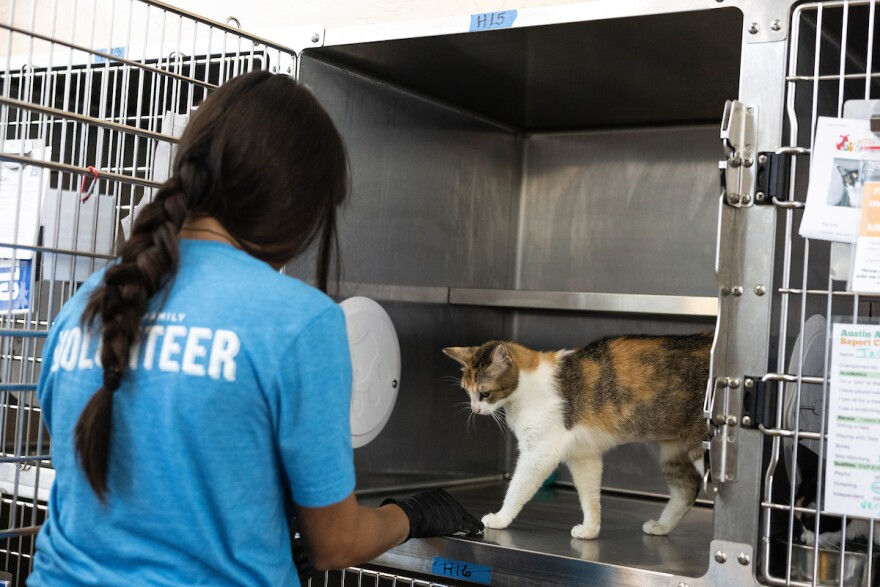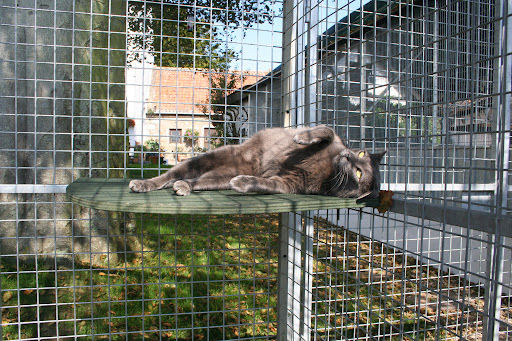What Should I Look for When Choosing a Cat Rehabilitation Center?
- Quin Whiddon
- Jun 8
- 5 min read
Updated: Jun 18

Taking care of a feral cat or kitties isn’t exactly easy. It’s not as simple as feeding them and hoping they’ll warm up to people. These cats often haven’t had much human interaction, so they need more than food and shelter. They need time, training, and specialized care to feel safe around people or other animals. If you're trying to help a cat like this, choosing the right rehabilitation center can make a big difference in how well they recover and adjust.
Not all places are prepared for the unique challenges of feral cat or kitties rehabilitation. Some cats may have behaviors or health issues that need proper attention from trained staff. Others might just need a quiet, structured environment to recharge and learn what it means to feel safe. Knowing what to look for in a center can help you find the best possible outcome for the cat you’re trying to help.
Understanding Feral Cat Rehabilitation

Feral cat rehabilitation is the process of helping a cat that’s lived in the wild or without much human contact adjust to a more stable and safe environment. Unlike a lost pet that’s used to being around people, feral cats can be very anxious or avoidant. They may respond with fear or aggression because they aren’t used to human voices, smells, or touch.
These cats usually need more than basic medical care. They often require slow, patient socialization and a quiet setting where they can take small steps toward trust. If you try to bring a feral cat straight into a typical home or shelter, it might not go well. That’s where rehabilitation centers come in. These are places built to help cats through the transition, with staff who understand how to move at their pace.
Some cats might never become lap cats, but that’s okay. Rehabilitation is about improving their quality of life. For some, that means learning how to live with humans. For others, it might mean getting healthy, fixed, and released back where they came from if that’s what’s best. The key is understanding each cat’s background and needs before jumping into a solution. When choosing a place to help a feral cat, it’s good to know exactly what kinds of things to look for.
Key Factors To Consider

Picking a place that can really help a feral cat takes more than a quick internet search or a pretty website. You’ll want to ask the right questions and be ready to do a little research. Every cat has a different story, and the right center will know how to work with that.
Here are five things worth checking out:
1. Staff Experience With Feral Cats
Not every cat needs the same kind of care. Staff who have dealt with feral or very shy cats before will know how to read their body language, avoid pushing them too far, and find the right way to connect with them.
2. The Look And Feel Of The Facility
Cats are sensitive to noise, smell, and space. Look for a place that’s quiet, clean, and doesn’t cram too many cats together. It should have calm zones, hiding spots, and room to roam. Indoor areas that feel safe but don’t make cats feel boxed in help a lot. The more cage-free the setup, the better chance a feral cat has to adjust.
3. Medical Support On Site
Regular checkups, vaccines, and dental care are just the basics. Some feral cats come in with untreated wounds, infections, or long-term conditions. Having a team that includes a vet or easy access to one makes the cat’s recovery smoother.
4. Behavior And Socialization Programs
Centers that work with feral cats should have a plan. That could include gradual exposure to humans, positive reinforcement using food and toys, or creating bonding routines. It’s not about turning the cat into a pet overnight. It’s about helping them feel calmer and safer each week.
5. Future Options For The Cat
A good rehabilitation center works with the long view in mind. That could mean adopting the cat into a quiet home, moving them into a permanent sanctuary, or releasing them back where they came from after spay or neuter surgery. The important thing is they have a clear, humane plan for what happens next.
Choosing a place with the right mix of people, setup, and planning can decide how well a feral cat adjusts. One example is a center that helped a cat who had lived in a junkyard all his life. At first, he cowered in the corner and hissed at any movement. Over time, with quiet routines and the same caretaker visiting daily, he eventually started rubbing up against their leg during mealtimes. That kind of progress doesn’t happen everywhere. It comes from patience, understanding, and the right environment.
Visiting And Evaluating A Center

Once you’ve narrowed down a few possible rehabilitation centers, the next step is visiting them in person whenever possible. A phone call or website can give you basic info, but walking through the space and seeing how the staff interacts with the animals adds a whole other layer of insight. It lets you see beyond polished photos and into the everyday workings of the place.
Before you go, try scheduling the visit ahead of time. That way, someone is available to show you around and answer questions. It also gives the staff a heads up about your specific concern for a feral cat, so they may be better prepared to explain how they handle similar cases. If you can’t visit in person due to distance or restrictions, ask if they offer virtual tours or live video calls. Many centers started doing this during the pandemic and some still gladly offer it now.
When touring a center, here are some of the key things to look for:
- Cleanliness: Are the cat areas tidy, odor-free, and well-maintained?
- Noise level: Is the space quiet and calm, or loud and chaotic?
- Interaction: Are the cats being treated gently and respectfully?
- Variety of spaces: Do they offer hiding spots and room to roam?
- Behavior signs: Are the cats relaxed, or do they look overly stressed?
Also, don’t hold back your questions. Ask about how many feral cats they take each year, what their daily care routines look like, how they evaluate if a cat is ready for adoption or release, and whether they offer long-term stays for those that can't be rehomed. People who care deeply about what they do usually welcome thoughtful questions.
You’ll know when something doesn’t feel right. If you notice staff brushing off questions or if the cats seem unusually fearful or ignored, trust your gut. On the flip side, a confident, clean center with open communication and good vibes is worth noting.
Making the Best Choice for Your Cat

Choosing a rehabilitation center for a feral cat shouldn’t feel rushed, and there’s no reason to settle. Whether you’re helping your first feral cat or have done this before, each cat deserves a plan that fits their future. Take time to visit places, ask the serious questions, and look beyond basic care. The right center will help give the cat their best shot at recovery and safety.
Every cat starts their journey differently. Some may hide for weeks before looking someone in the eye. Others might surprise you by warming up quickly. The right setting helps bring out each cat’s best chance at a calmer, happier life. When you find that fit, your efforts matter a whole lot more.
Helping a feral cat find comfort and security is all about choosing the right environment. If you're ready to make that choice, let Sydney's Sanctuary assist you.
.png)



Comments